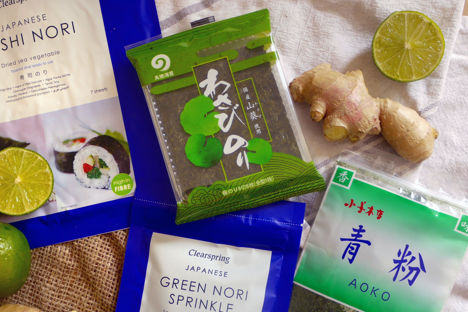
Flavours of Japan: seaweed
Delve into the wonderful world of seaweed with Kate Doran's guide. An ingredient that has long been put to fantastic use in Japanese cooking, seaweed is becoming increasingly popular in Western dishes, thanks to its delicious umami flavour and health-giving properties.
Flavours of Japan: seaweed
Delve into the wonderful world of seaweed with Kate Doran's guide. An ingredient that has long been put to fantastic use in Japanese cooking, seaweed is becoming increasingly popular in Western dishes, thanks to its delicious umami flavour and health-giving properties.
View more from this series:
Flavours of JapanThirty odd years ago, the closest most Brits got to seaweed was the crispy (most likely cabbage) variety at their local Chinese restaurant or the murky fronds clinging to a bucket and spade at the seaside. Nowadays, thanks in large part to the growing influence of Japanese cuisine, this unusual ingredient appears on our tables in numerous different forms, celebrated for its unique flavour profile and versatility.
Seaweed has been a staple part of the Japanese diet for thousands of years, but first became popular in the West as a health food. In the same vein as leafy green vegetables, this sea-grown green algae is wonderfully good for us: high in protein, low in fat and packed full of vitamins and minerals. But beyond its superfood status seaweed tastes delicious too, adding texture and a salty moreishness to all sorts of dishes.
Nori is perhaps the best-known variety of Japanese seaweed, most commonly found rolled round sushi. It tends to come toasted and can also be used to season miso soup, flaked over salads and fish dishes or flavoured with chilli or wasabi and packed as a crisp-like snack. Beyond nori, there are a number of other seaweeds commonly used in Japanese cuisine including dulse, also known as sea lettuce, with its distinctly savoury, almost bacon-like flavour, the slightly sweet wakame - which is delicious in salads - and kombu or kelp, which is used to season the Japanese broth dashi.
Seaweed is the star of many Japanese dishes, but it can also be incorporated into Western cooking. Try sprinkling nori flakes over a batch of freshly popped corn, replace bacon in a quiche with salty dulse, stir seaweed into a seafood risotto or use it to add depth of flavour to all sorts of stocks, soups and broths. With so many different varieties available, seaweed is a fantastic ingredient for the adventurous home cook to experiment with.


